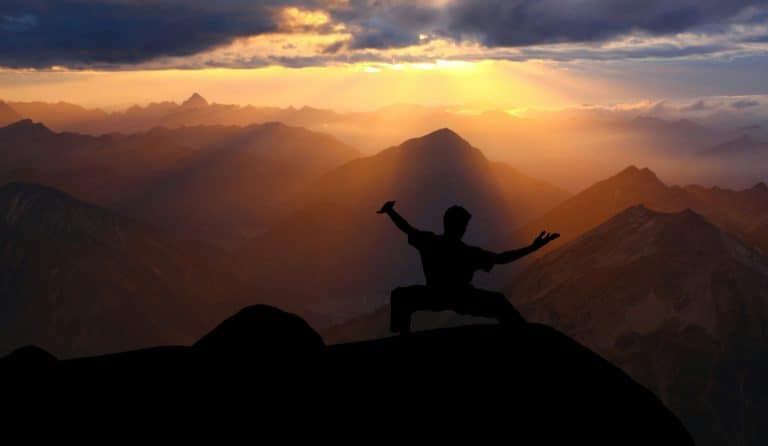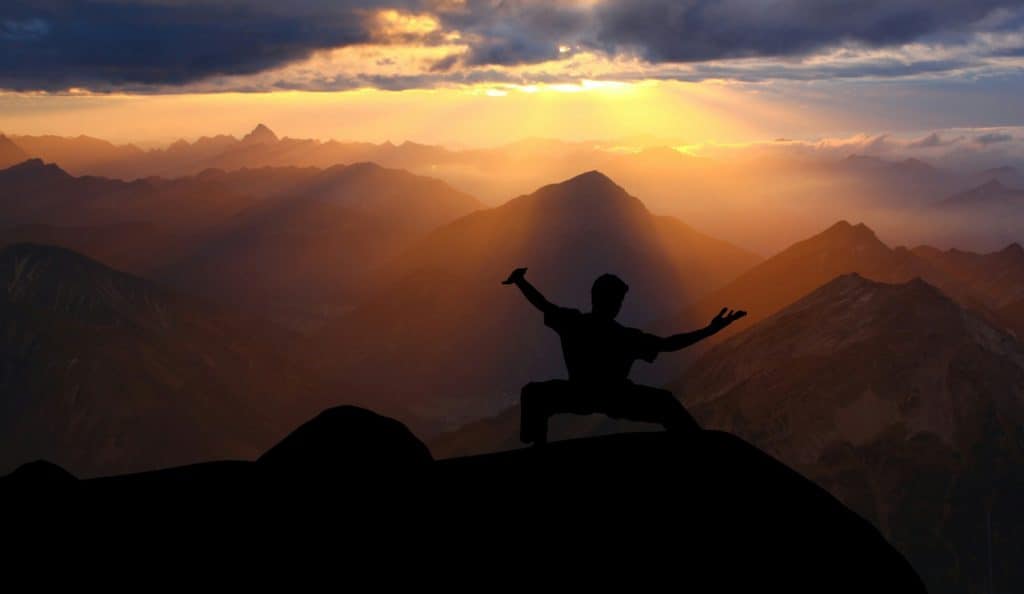Wellness and witchery go hand in hand.
Movement is an essential part of my daily rituals and one of the things I love is Tai Chi. It’s a form of martial arts, but it’s also a moving meditation to connect you with your mind and body. This might be my favorite thing about it.
This post covers just the basics of Tai Chi, including what it’s like, who it’s for, and tips for getting the most from practicing it.
I hope this will inspire you to see if this practice might be a good fit for you.
What is Tai Chi like?
When practicing, you’ll move very slowly, performing specific movements and breathing in a specific way. There are 13 exercises, called postures, that mimic movements animals make. Each of these movements has a name. For example, one movement is called Parting the Wild Horse’s mane. Fun, right?
The exercises are designed to improve physical endurance, mental clarity and overall health and well-being. It’s a very calming, centering, and balancing practice, just like seated meditation. Meditation can be difficult for some folks, and many will find it a little easier to do a moving meditation like Tai Chi. So if you’re one of those people that finds seated meditation hard, give this a try.
Tip: Meditative practices like Tai Chi can be a wonderful compliment to your Reiki practice.
What is it about?
Tai Chi uses the ideas of opposing forces like yin and yang, as well as “qi,” which means vital life force energy.
(This is the energy also referred to in Reiki. You can read more about that here.)
Bringing both of these elements into your exercises helps improve your overall well-being because it will connect all the forces in your body with your life force.
By mindfully moving your body in these ways, you can improve your health and vitality.
Tai Chi is even beneficial for improving immunity by keeping the qi (sometimes spelled ki or chi) moving freely in the body.
Many eastern traditions believe that stagnant, imbalanced, or stuck chi creates disease in the body.

Who is Tai Chi for?
Tai Chi is suitable for almost anyone.
It can truly help bring more health and wellness to people of all ages and at all fitness levels, since the movements can be modified for the individual’s needs. There are even forms of Tai Chi that can be done while sitting, making it perfect for those with limited mobility.
- It is low impact, weight-bearing, and aerobic all at once. It improves muscle strength, coordination, and flexibility.
- Tai Chi also improves balance, which can help reduce falling risks.
- It can also improve problems of pain and stiffness associated with arthritis and improve sleep quality.
These tips can help you get the maximum benefits from Tai Chi:
- Practice on an Empty Stomach: It’s better to be fully hydrated and exercise before meals rather than after meals. This ensures you’ll be able to do the movements comfortably.
- Start Slowly: Don’t start at the end, rather, start with the beginning. It will take time to learn all the movements, let yourself have the time needed.
Tip: If you find it too difficult to learn and/or practice, give Qi Gong a try. It’s similar, but some folks will find it overall easier to practice. Here’s one of my favorite YouTube channels for Qi Gong.
- Avoid Exercising When Very Tired. It’s very relaxing, but it is often best to avoid doing it when you’re super worn out and tired. This is especially true when you’re just beginning. It shouldn’t feel like a chore.
- Seek Medical Care When Needed: If you’re using it for some sort of pain or discomfort, be sure to seek medical attention in addition to the Tai Chi.
- Modify Movements When Needed: You don’t have to do all the movements exactly as an experienced practitioner. If you need to, find a way to modify the movements to make them work best for your needs.
- Seek Trained Instructors: You can use videos, but working with an expert will ensure you’re doing the movements and breathing correctly to avoid injury.
- Focus as Much on Breathing as Movement: The breathing is just as important as the movements. When you are learning, focus on both your breathing and the movements for the best results.
- Don’t Overdo It – Never do more than you can, and don’t push yourself to do more. It’s okay with Tai Chi to do less than you think you can.
Summary
If you’re looking to add some movement to your days, consider Tai Chi. You can start using Tai Chi at any time throughout your life.
Remember, you don’t need to be in tip-top shape to do Tai Chi. There are seated forms of Tai Chi for those who can’t do the postures while standing.
You don’t need to be very young, either. In fact, Tai Chi has been shown to be especially helpful for elder people. It can really help people gain strength, get more sleep, and improve their overall health overall.
**Of course, you should always consult your doctor or healthcare provider if you are considering taking up any form of exercise including Tai Chi to be sure it’s safe for you to do so.
Be well, witchy friends.
Blessed be.
You might like these posts too:
Journaling is a Powerful Tool for the Healing Journey
Witch Life: 6 Powerful Ways to Create Resilience
Check out this course: Ravynwylde – A Sacred Year Journey



